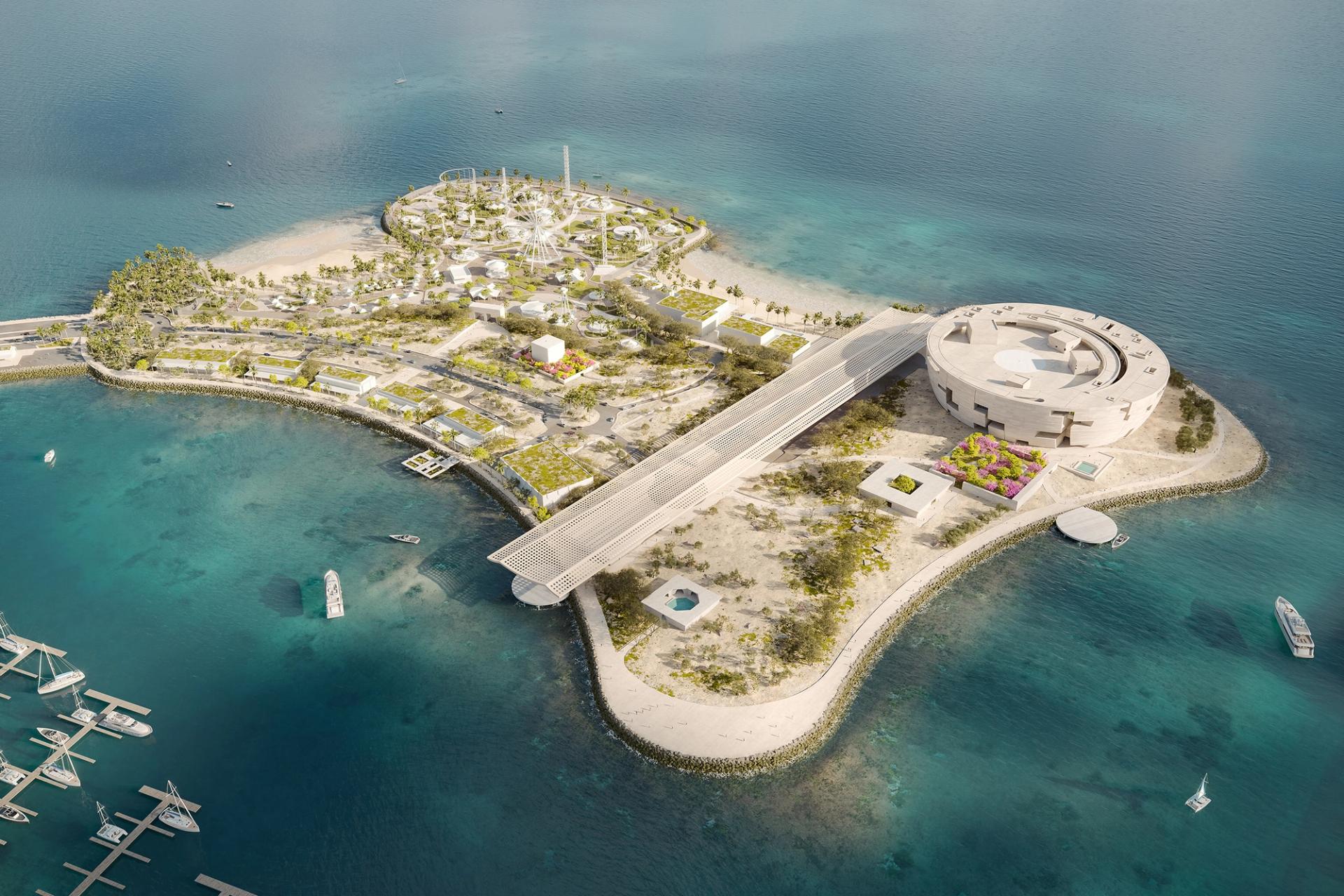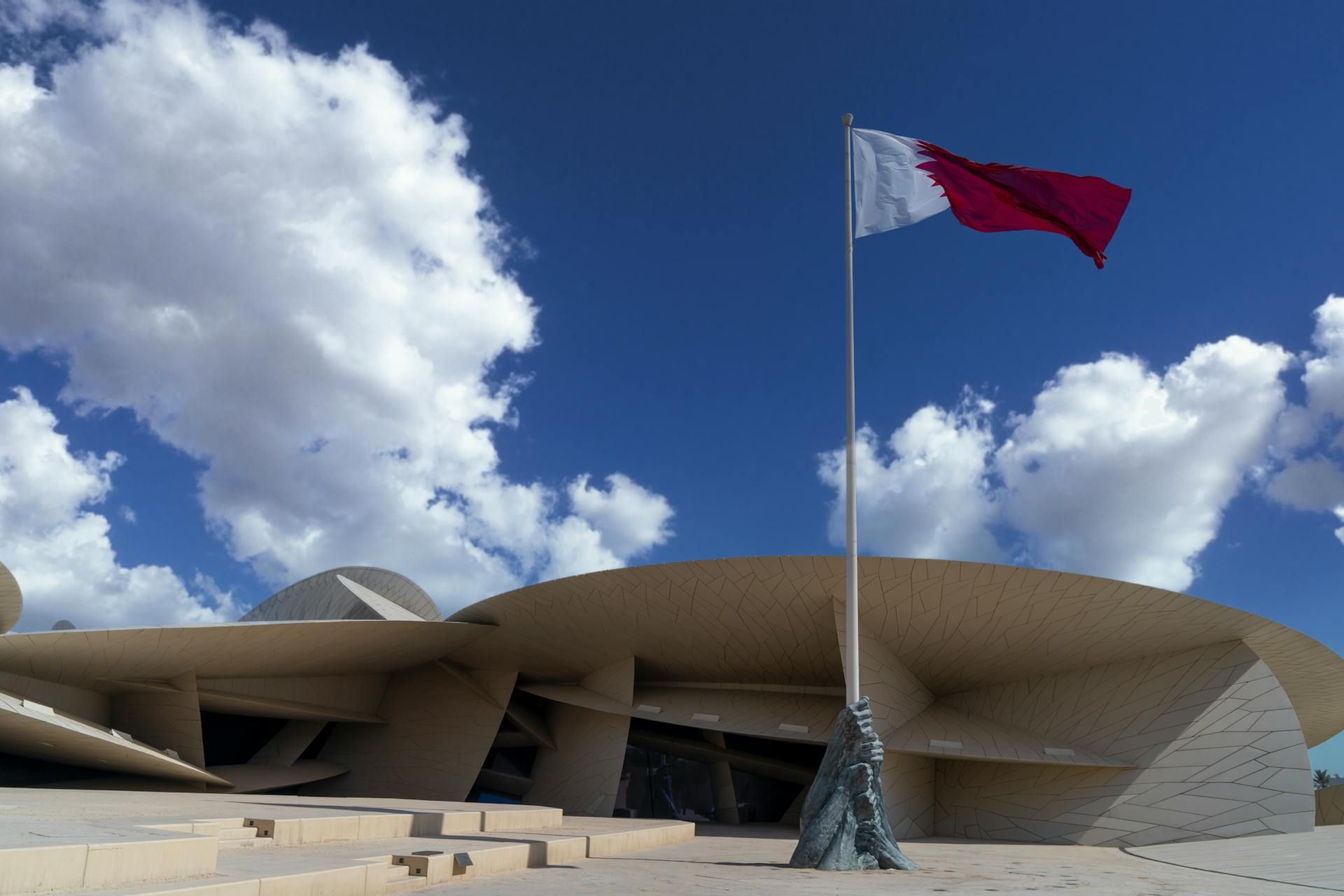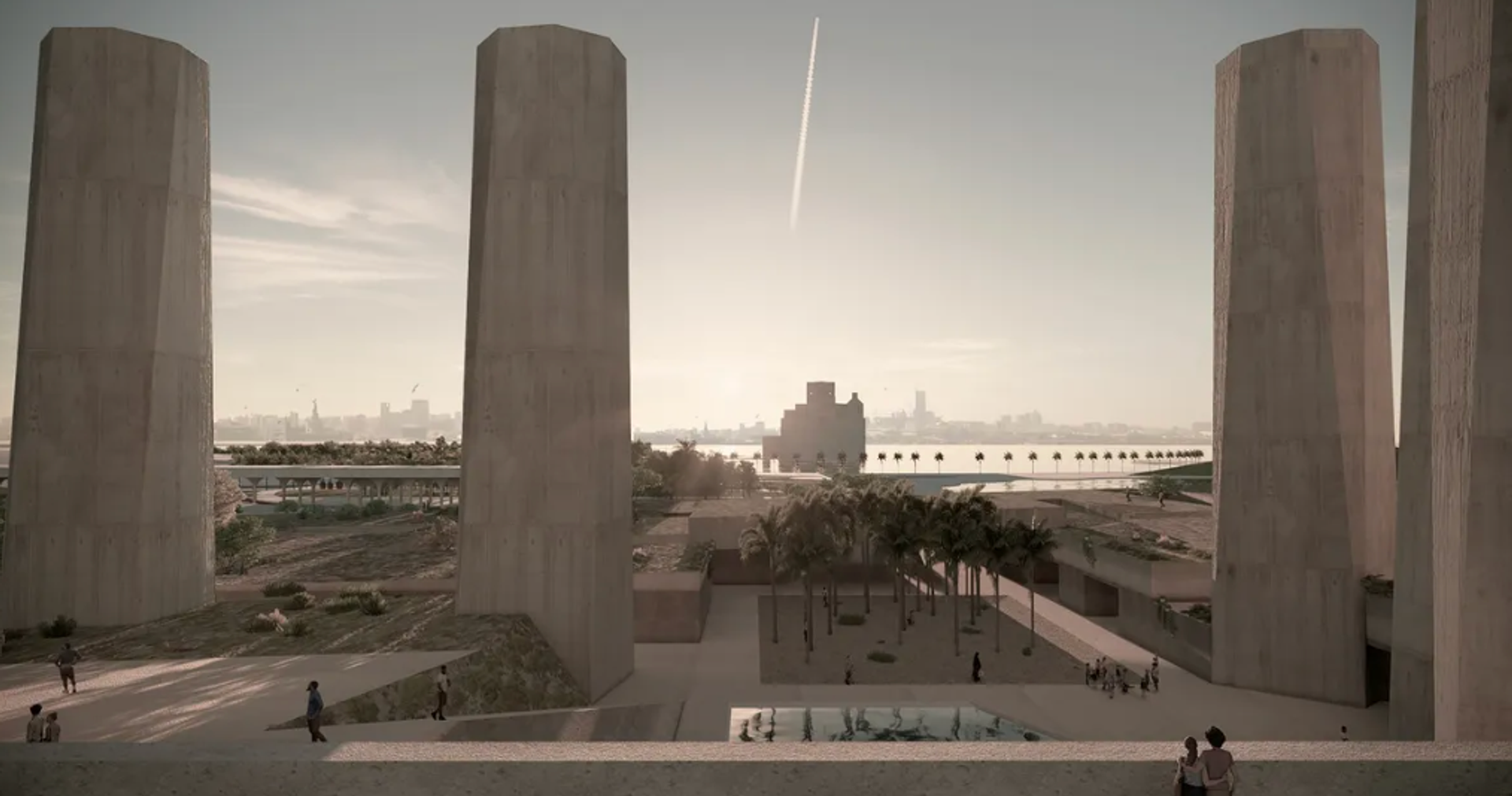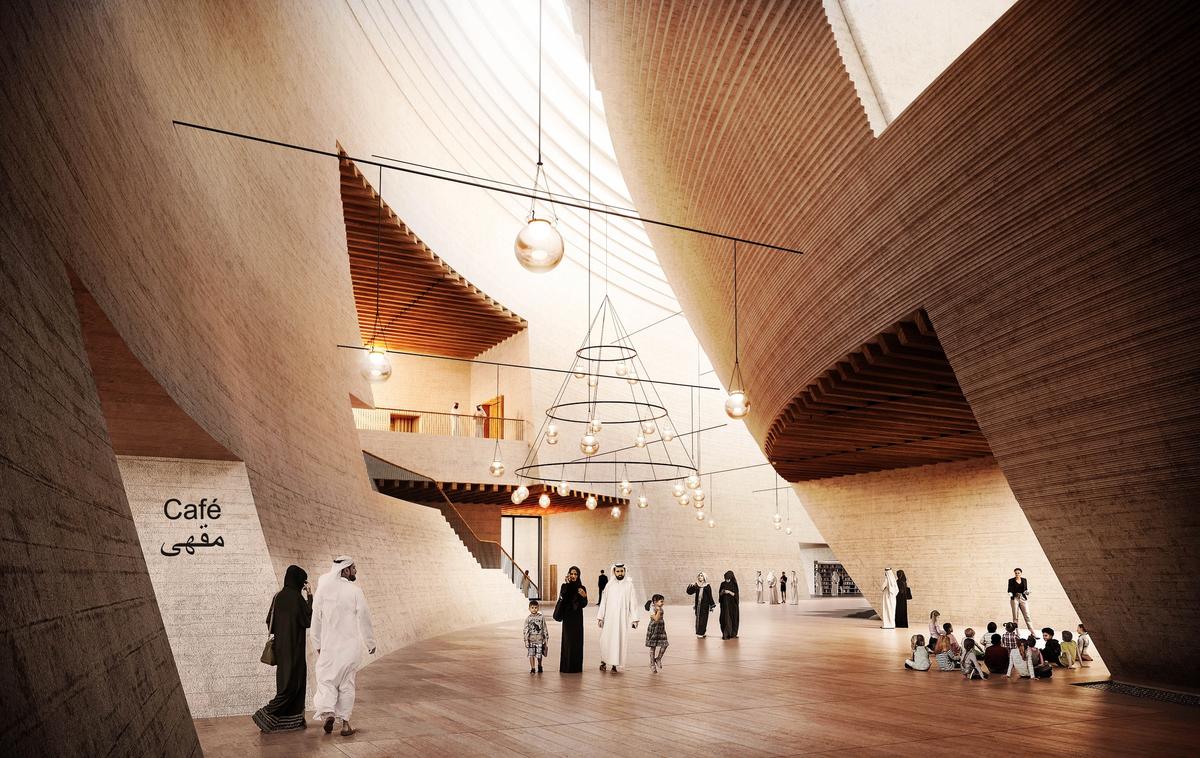The Swiss architects Herzog & de Meuron have unveiled detailed plans for their next museum project which is taking shape in the Middle East. The high-profile Basel-based practice has been commissioned by the small, oil-rich state of Qatar to design a new museum in Lusail City (a newly built urban area north of the capital Doha) which will house the world’s largest collection of Orientalist art.
The Lusail Museum is conceived as “a vertically layered souk, or miniature city contained within a single building”, a project statement says, adding that three intersecting spheres will divide the building into two distinct parts: one resembling a full moon, the other a crescent moon wrapping around it. The timeline and budget for the new museum are undisclosed.

Aerial View of Al Maha Island
© Herzog & de Meuron. Courtesy Qatar Museums.
Some of the gallery spaces will be filled with replicas of important historical landmarks such as the dome covering Murat III’s bedroom pavilion in the Palace of Topkapi in Istanbul (1579); the dome of the Jameh Mosque in Natanz (1320); the Ablution fountain in the courtyard of Ibn Tulun Mosque in Cairo (1296) and the Aljafaria dome in Saragossa (1050).
The Lusail museum, located on Al Maha island, will “house the largest collection of Orientalist paintings and photography in the world”, according to a book published to coincide with the FIFA World Cup in 2022 entitled The Power of Culture. “Acting as a central think tank… and furthering discourse on the state of the Arab world today, it will align with Qatar’s long-standing foreign policy of empowering the voices of Arabs and standing up for their values.”
Herzog & de Meuron have designed some of the world’s most significant museums including Tate Modern in London and M+ in Hong Kong. The Lusail Museum is the latest blockbuster institution in the state’s cultural portfolio, bolstering its bid to be a key arts hub in the region.

The National Museum of Qatar was opened in 2019
Qatar has indeed ramped up its cultural offerings in the past two decades, embarking on a hugely ambitious museum development programme led by Sheikha Al Mayassa, the sister of Qatar’s ruling emir, Tamim bin Hamad Al Thani, and the chairperson of Qatar Museums.
In 2019, the National Museum of Qatar opened, designed by the French architect Jean Nouvel for an undisclosed sum (the intricate interlocking building design, inspired by the desert rose, has made the museum one of the most recognisable cultural venues in the world).
The Art Mill Museum project is another strand of the Qatar Museums masterplan. Occupying a former flour mill on a waterfront site close to the Museum of Islamic Art, it will house “an international collection of modern and contemporary art in all its forms”, says The Power of Culture book. The museum, designed by the Chilean company Elemental, will house “exceptional collections started 40 years ago with multidisciplinary works of great diversity, dating from 1850 to the present”, adds an online statement.

A rendering of the view from the South entrance of the Art Mill Museum © Qatar Museums
In a text accompanying an exhibition focused on the Art Mill Museum in 2022, the curator responsible for the project, Catherine Grenier, wrote that “as the first museum in the Arab world to have at its disposal a national collection of international modern art, it is rooted within the legacy of a millennia-old culture while representing artworks from around the world”. Details about the programme and acquisitions are to be announced.
Qatar faces competition to be the pre-eminent culture hub in the Middle East. Neighbouring Saudi Arabia is moving ahead with numerous projects such as a planned contemporary art museum in the northwestern region of AlUla overseen by Iwona Blazwick, the former director of the Whitechapel Gallery in London. Blazwick is helping to build a collection for the new museum in her role as curatorial lead, Contemporary Art Museum, AlUla.


